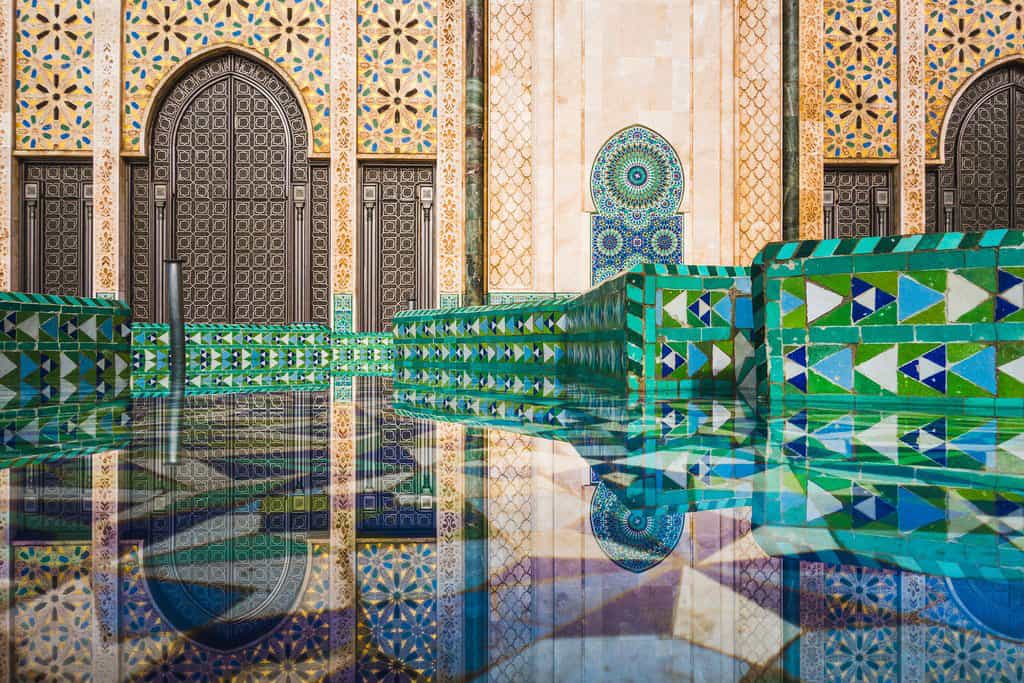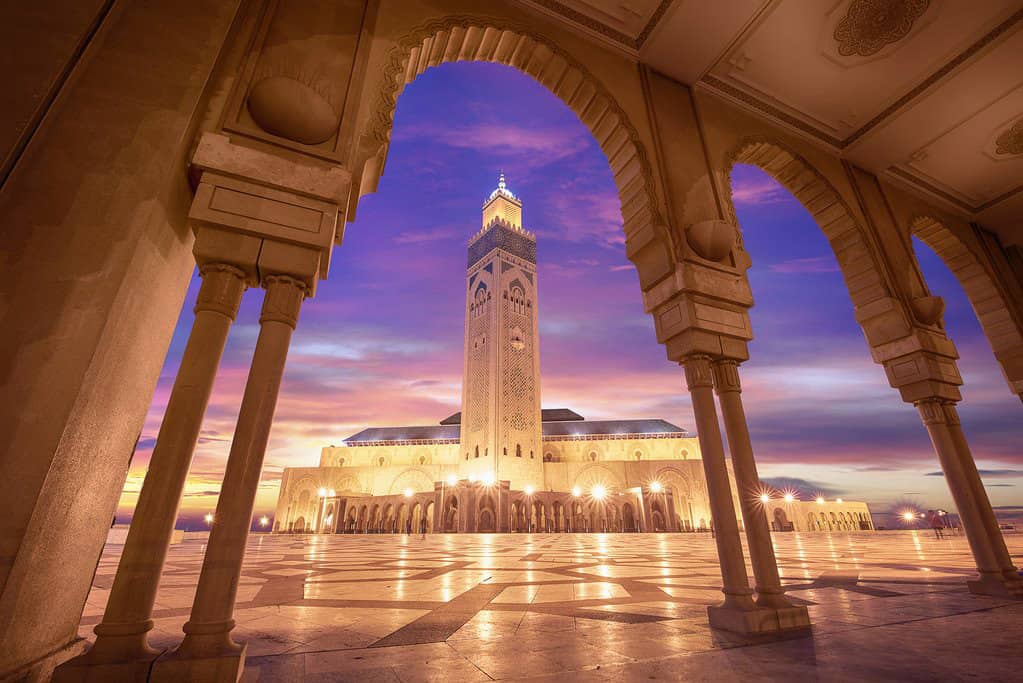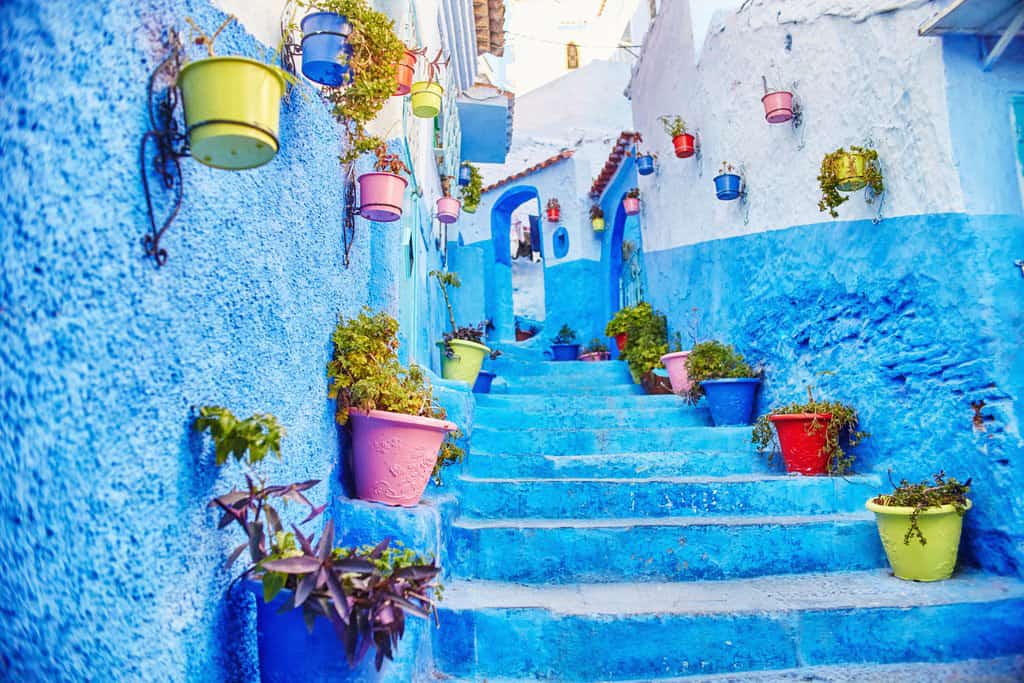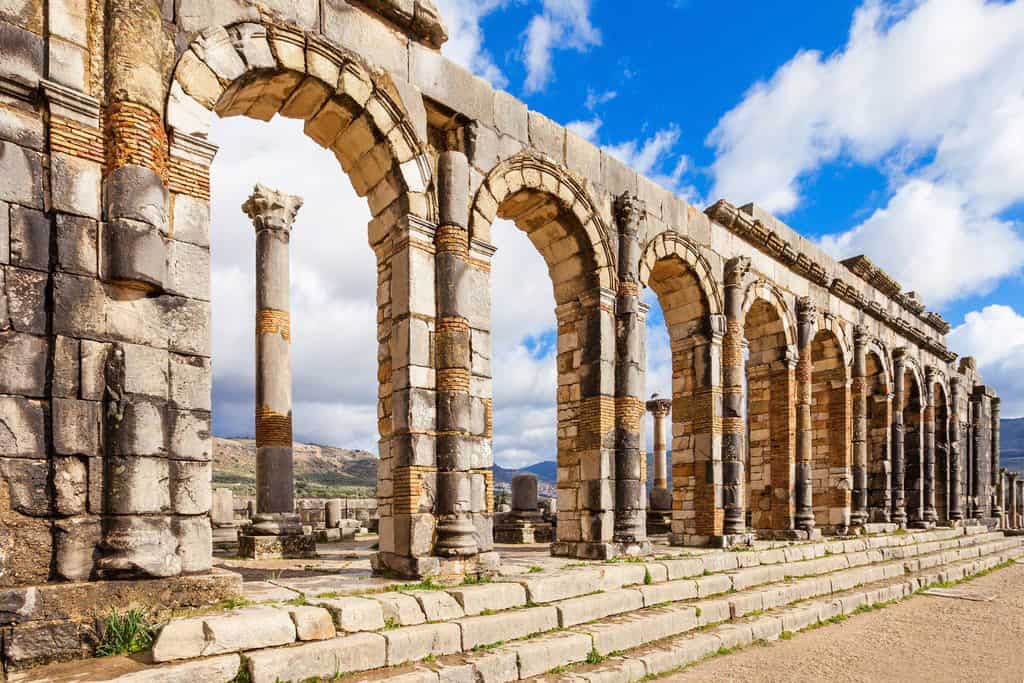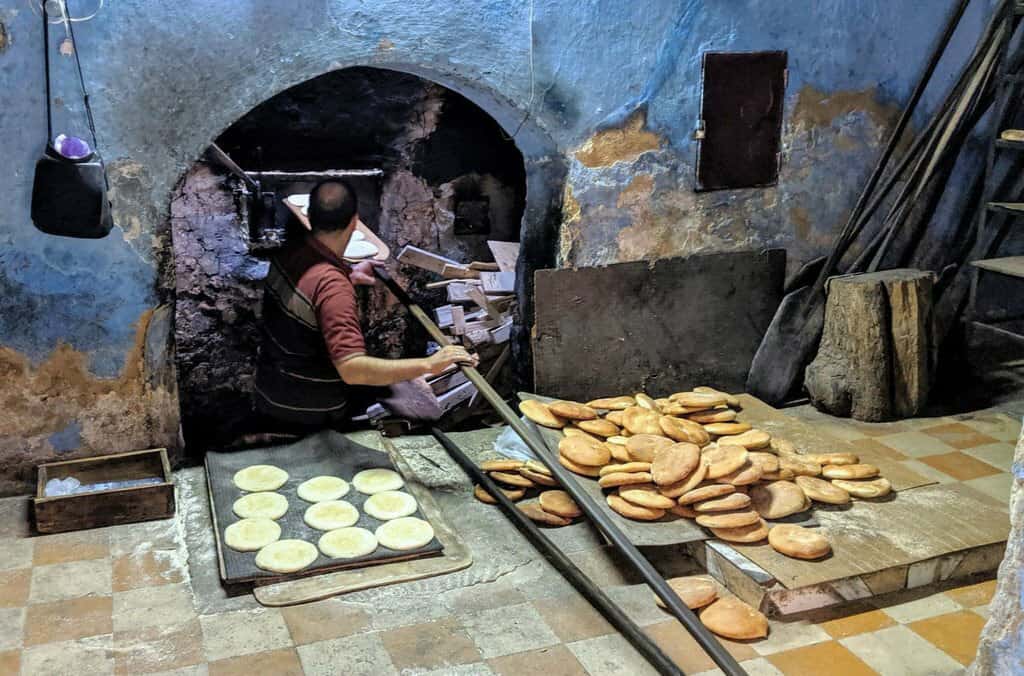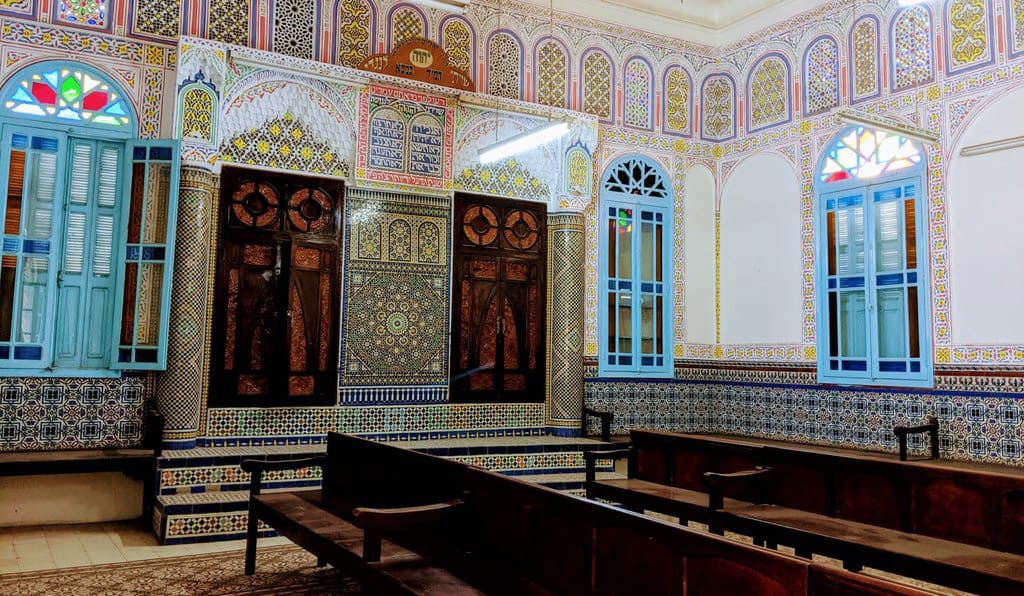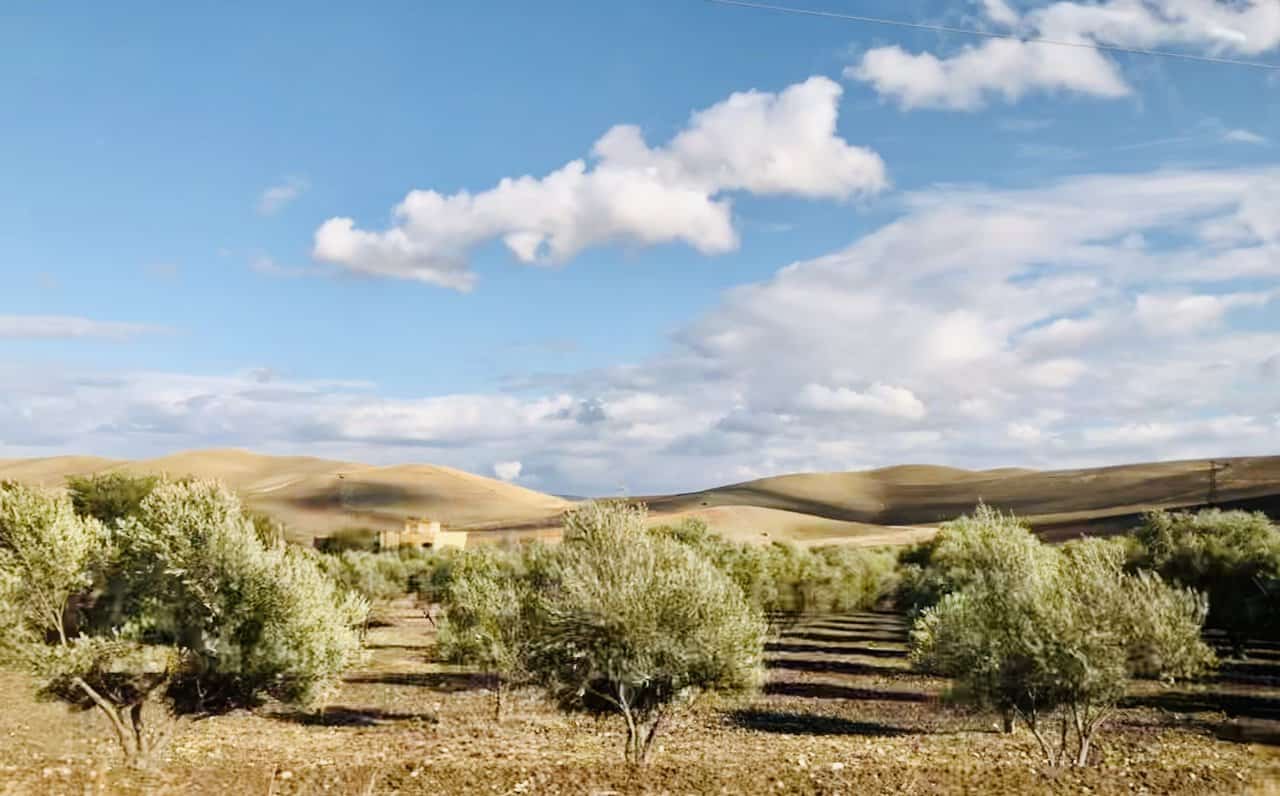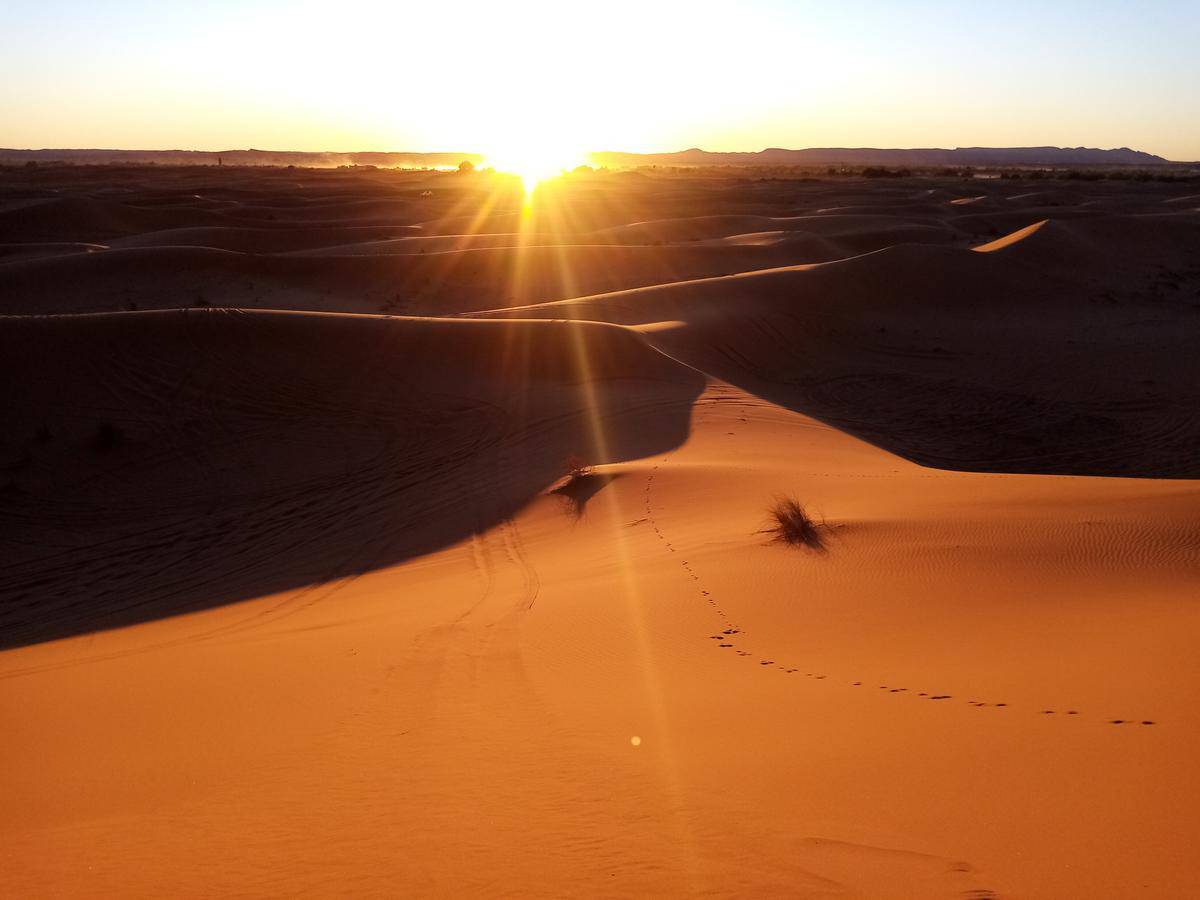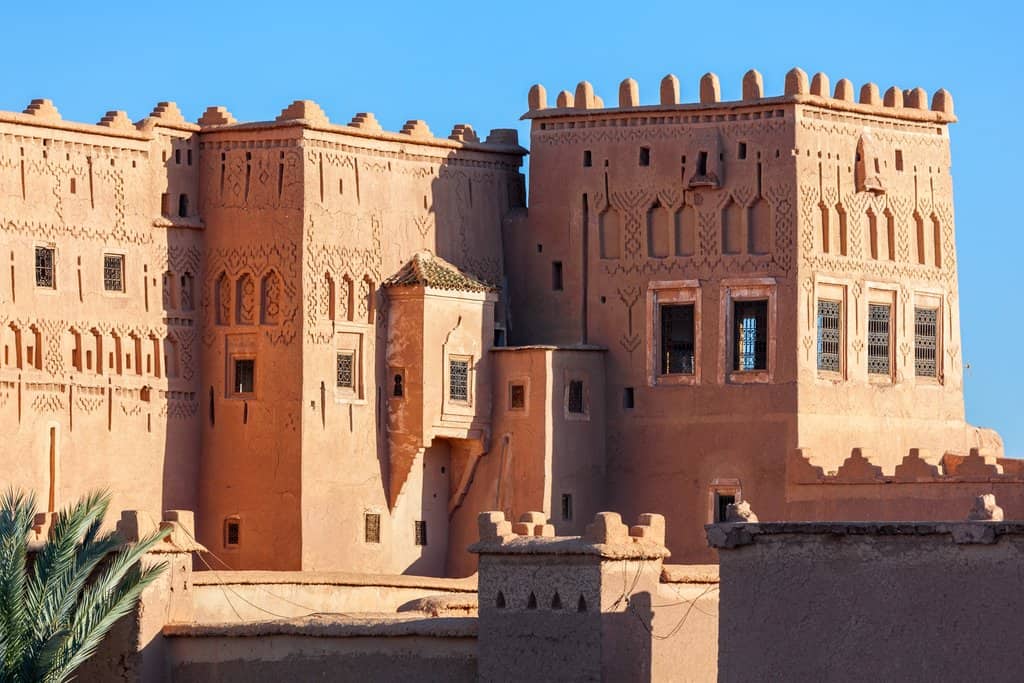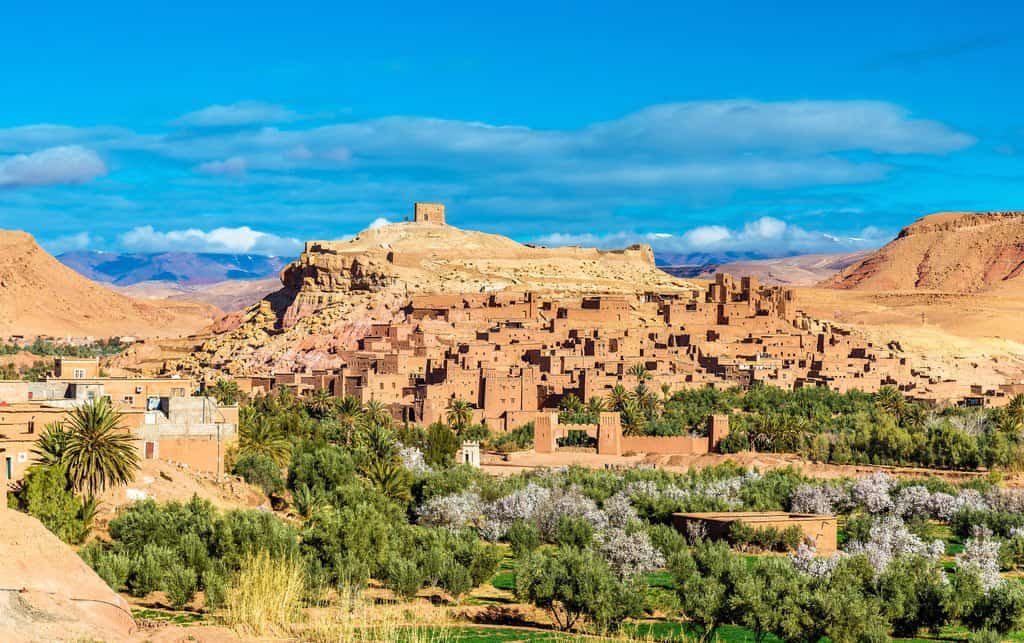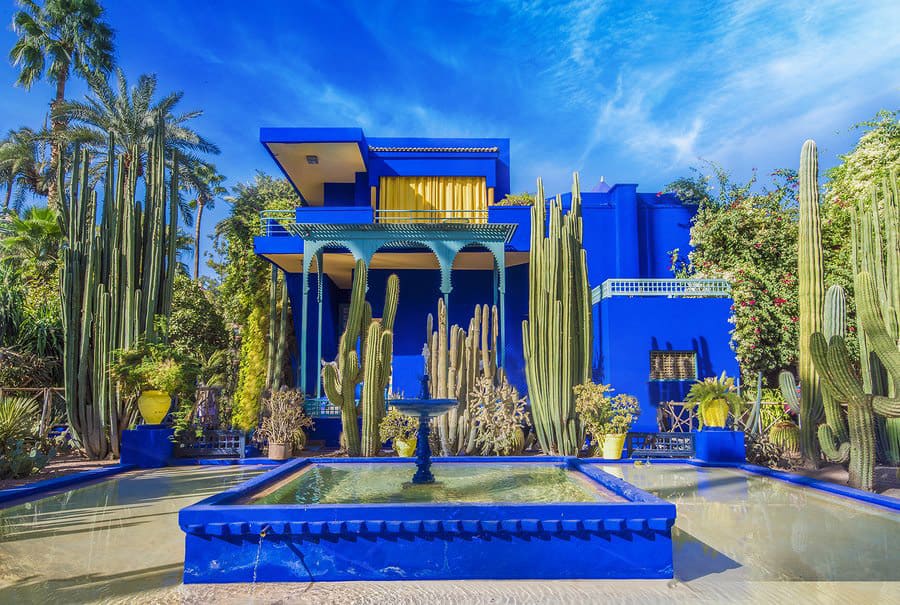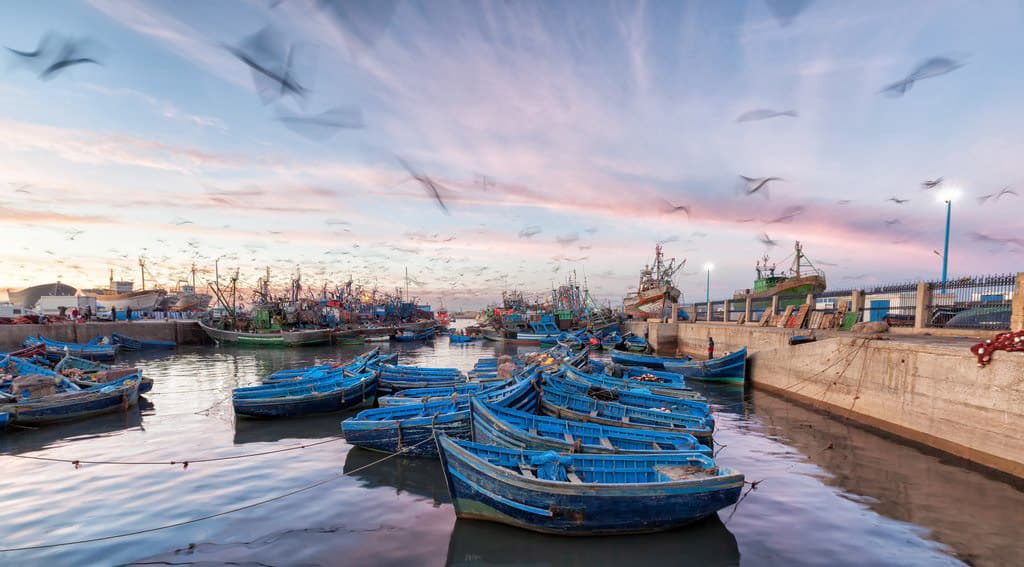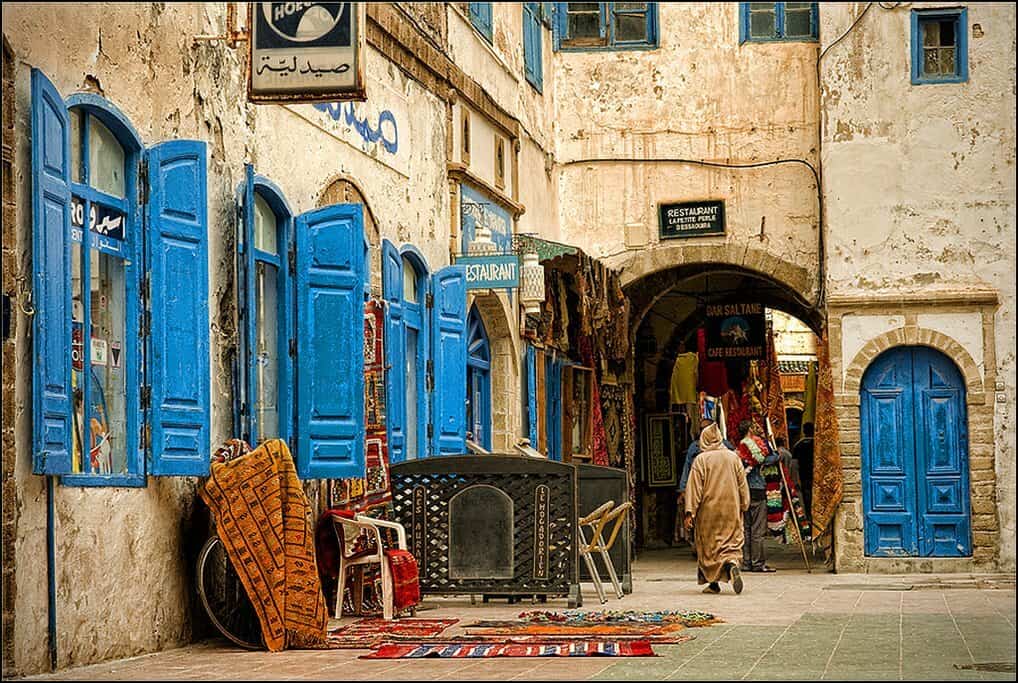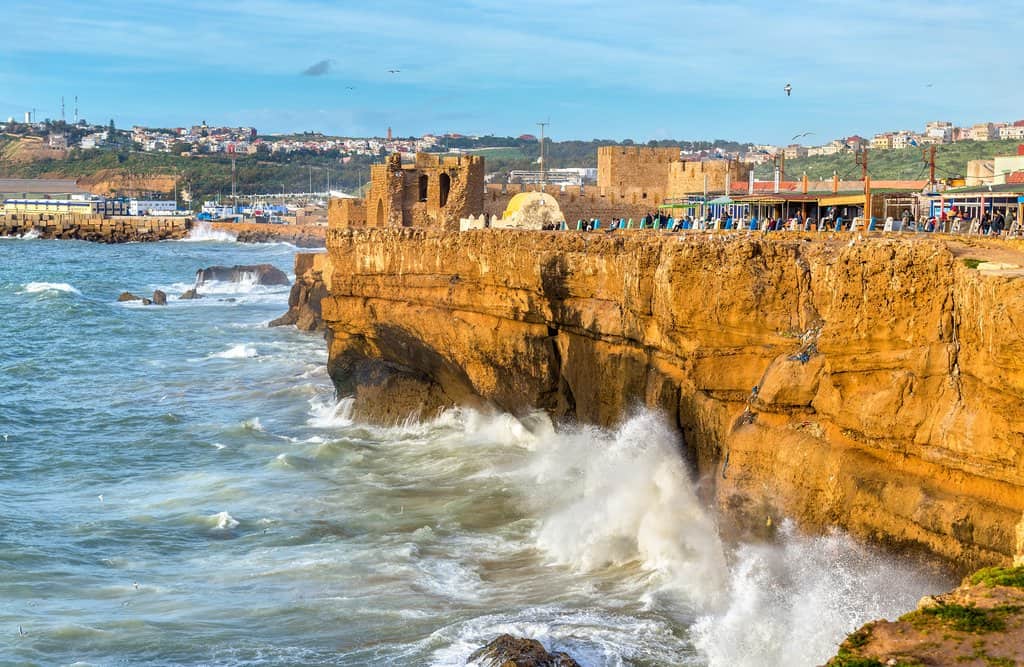Jewish Heritage & Historic Morocco
From Casablanca
15 Days
Overview
This 15-day itinerary takes you on a journey back in time to discover Morocco’s history and its unique Jewish heritage. Visit Casablanca’s Museum of Moroccan Judaism and the Bayt Dakira cultural center in Essaouira, the only Jewish museums in the Arab world. Explore Morocco’s culture and history as you wander through medieval medinas in Fes and Marrakech, see the country’s best-preserved Roman ruins at Volubilis, and take a trip to the historically-Jewish city of Sefrou
Details & Itinerary
Day 1: Arrive in Casablanca
Arrive in Casablanca and meet your private driver at the airport. Spend the rest of the day relaxing or exploring the city on a self-guided tour. You can start your time in Casablanca with a stroll through the Old Medina. Despite its name, Casablanca’s historic medina (old city) is only around 200 years old. Afterward, check out the Habbous, or “New Medina.” Built in the 1930s by the French, this neighborhood offers a taste of some interesting art deco architecture. It is also a pleasant place to seek out crafts and food from the nearby markets.
Next, wander along the Boulevard de la Corniche, an oceanfront area sometimes referred to as “Morocco’s Miami.” The lengthy waterfront is home to several beaches and a few sites of interest. If your main reason to visit Casablanca is to follow in the footsteps of Ingrid Bergman and Humphrey Bogart, consider having dinner at Rick’s Café, which recreates the famous scene in the legendary film.
Day 2: Visit the Hassan II Mosque & Museum of Moroccan Judaism
Begin your day with a tour of the Hassan II Mosque, inaugurated in 1993. Wander through and admire its lavish interior, with gilded ceilings and details in wood, marble, and carved stone. The mosque’s 690 feet (210 m) tall minaret is the tallest structure in Morocco and the second-tallest minaret in the world. This is one of the few mosques in Morocco that non-Muslims can enter.
In the afternoon, visit a few locations specific to Moroccan Jewish heritage. The first is the Museum of Moroccan Judaism, originally a Jewish orphanage. You will see historical jewelry and manuscripts, including a reconstructed jewelry-making shop. Next, visit Temple Beth-El, a beautifully refurbished synagogue with exquisitely-colored glass windows. If you have extra time in the late afternoon, return to the Habbous for shopping and relaxation.
Day 3 : Transfer to Chefchaouen via Rabat and Ouazzane
In the morning, head to Morocco’s capital, Rabat, to visit the Hassan Tower monument, one of the most magnificent buildings of the Almohad Dynasty. The Hassan Tower is the minaret of an incomplete 12th-century mosque. All that remains of the old mosque today is the red sandstone tower standing at 144 feet (44 m) and about 200 columns. Across from the Hassan Tower is the modern Mausoleum of Mohammed V. It’s home to the tombs of the Moroccan king Mohammed V and his two sons, Prince Abdallah and King Hassan II.
Later, continue to the town of Ouazzane, a holy city for many Moroccan Jews. Annually, they make a pilgrimage to the town to visit Rabbi Amram ben Diwan’s tomb. Born in Jerusalem, this rabbi was known for performing many miracles during his lifetime in Morocco.
Next, get back on the road and continue your journey to Chefchaouen, known as the “blue city” due to its blue-painted buildings. Once there, head out to explore the town at your own pace, or relax in Outa el-Hammam, the main square. Be sure to order a maqlouba (upside-down) coffee, and enjoy it while watching the local women retrieve water and wash their laundry in the nearby spring. Shopping in Chefchaouen is great for the budget-conscious, and you’ll be able to find handcrafted wool garments, woven blankets, cedarwood furniture, and other artisanal work.
Day 4 : Explore Moulay Idriss, Volubilis & Meknes on the Way to Fes
Say goodbye to Chefchaouen and travel south to Fes, one of Morocco’s four “imperial cities.” Before you leave, take some more time to explore Chefchaouen’s medina, or watch the sunrise from the Spanish Mosque if you wake up early enough.
On the way to Fes, visit Volubilis, a UNESCO World Heritage Site home to Morocco’s best-preserved Roman ruins. Take a nice break from your car ride to wander through the sizeable complex, exploring temples, large merchant homes with visible heating systems, and many intact mosaics. Next, move on to Moulay Idriss, Morocco’s first Islamic capital and a site of ongoing cultural significance. The city contains the only round minaret in Morocco. Have lunch here, or wait until you reach the prosperous imperial city of Meknes.
In Meknes, wander through the Ville Impériale area, where you can see gardens, palaces, the impressive gate of Bab al-Mansour, the Mausoleum of Moulay Ismail, and the Royal Stables. Many of these palaces were constructed with materials taken from Volubilis, so be on the lookout for Roman columns hidden in unexpected places! End the day at your riad (traditional house with a courtyard) in the Fes medina.
Day 5 : Wander through Fes’ Jewish Quarter and Medina
Meet your tour guide after breakfast to start your exploration of Fes’ old medina, which is full of charming alleyways and narrow roads. Fes has a rich Jewish heritage. On your tour, you’ll visit the mellah, the old Jewish part of the medina, and also the Jewish Cemetery, where Rabbi Raphael Moshe Elbaz and Rabbi Lahou Harroch are both buried.
In the afternoon, get to know the artisan community with visits to iconic tanneries and mosaic workshops. Meet local craftspeople, watch them at work on their trades, and learn about the history and importance of their artistry, not just within Fes but beyond the old city’s walls. Later, head back to your riad for a little reprieve. Relax for the rest of the day, or return to the streets of the medina and test your new knowledge of the city.
Day 6: Day Trip to Sefrou: Jewish Heritage and Artisan Craft Center
Today, meet your guide in the morning for a day tour of the city of Sefrou. Sefrou is a walled town nestled in the slopes of the Middle Atlas Mountains, about 18 miles (29 km) southeast of Fes. It began as a market town in the Roman era and as a stopping point for caravans of traders making their way from the Mediterranean to the Sahara Desert. Over the centuries, the town became a melting pot of cultures. Before most Jewish Moroccans left the country when the French departed in the 1960s and 1970s, a third of Sefrou’s population was Jewish.
While in town, visit the Craft Center of Sefrou. This beautiful complex is located by the old city and is home to several workshops where artisans create woodworks, ceramics, woven rugs, and even silk buttons for djellabas (traditional robes). Here, you will get the chance to see their work and learn about their crafts. In the evening, head back to Fes for dinner.
Day 7: Travel to the Atlas Mountains
Use the morning to explore more of Fes’ medieval medina. Visit the city’s historic sites, such as the Bou Inania Madrasa and the Royal Palace of Fes, make time for some shopping, and enjoy a relaxing lunch. Then, say goodbye to Fes and head higher into the Middle Atlas Mountains.
About an hour after leaving Fes, you’ll see Ifrane National Park’s vast cedar tree forests. This park is known for its Barbary macaque monkeys, an endangered species and the only African monkeys found north of the Sahara Desert. Once you’ve passed through the park, you’ll reach Azrou, a beautiful Berber town known for its rug and jewelry making. Here, you can have dinner and relax before bedtime.
Day 8: Over the Middle Atlas to the Desert: Erfoud, Merzouga & the Sahara
Get an early start as you head out of the Middle Atlas Mountains and into the desert region. First, make a short stop in Midelt, known as “the apple city” due to its prolific apple production. Keep an eye out for the nearby Moulouya River, which allows this fruit to grow in the desert. Continuing onward, traverse the Tizi-n-Talremt Pass and into the Ziz Valley, known for its hidden oases and clusters of palm trees. You can stop in the town of Errachidia for lunch. While in this area, visit the Musée des Sources de Lalla Mimouna and see the natural mineral spring. “Lalla Mimouna” comes from a Muslim saint recognized and celebrated by Moroccan Jews.
After lunch, head toward the bustling market town of Erfoud, known for its date festival and famous for its fossil mining and artisan factories. Soon, you’ll see the sand waves of the Erg Chebbi in the distance. This vast sea of dunes covers 22 square miles (35 km²), with some dunes rising to over 656 feet (200 m). Take a short break near the town of Merzouga as you prepare for an exciting camel ride through the dunes. Later, head back to camp for dinner and a night by the campfire to enjoy traditional Berber music from the locals.
Day 9: The Edge of the Sahara and Fossil Workshops
Wake up early to be rewarded with a sunrise over the sand dunes. Eat breakfast in camp and travel back across the desert to Merzouga. Meet your driver there, and begin your long drive to Ouarzazate. Consider stopping in Rissani before setting out across the desert plains. This is an excellent place to walk around a traditional market, especially on market days when many animals are bought and sold. Rissani is even home to a “donkey parking lot”!
Spend the rest of the day traveling through the remote, empty landscape bordering the Sahara. You’ll be surrounded by views of desert plains, high mountains, and plateaus. Along the way, make a brief stop in Tinghir, a Berber town that originally had a thriving Jewish community. Walk through the streets of the old quarter to get a sense of the town’s past. Continue to the scenic Dadès Gorge, which cuts through a dramatic landscape of rusty red and mauve-striped mountains, and stop for lunch in nearby Boumalne Dadès. Finally, end your day in Ouarzazate, a town that has become famous after being used as the backdrop for many films and TV shows.
Day 10: Over the High Atlas to Marrakech via Aït Benhaddou.
Start your day with a guided tour of Aït Benhaddou, Morocco’s most famous kasbah (fortification) and a UNESCO World Heritage Site. People believe this fascinating old ksar (Berber palace) dates from the 11th century, when it held an important position along the trans-Saharan trade route between Marrakech, Ouarzazate, and the southern desert.
Once you’ve finished exploring the site, it’s time to head back out of the Sahara Desert and toward the city. Wind your way up the dry desert slopes of the High Atlas Mountains through the Tizi n’Tichka Pass. Soon, you will enter the hustle and bustle of vibrant Marrakech. Once there, spend the rest of the afternoon relaxing at your leisure. Then wander over to the city’s lively main square, Jemaa el-Fna, for your evening meal.
Day 11: Medina and City Tour & Hammam in Marrakech
Head off on a guided tour to explore the old medina of Marrakech, a UNESCO World Heritage Site. In the city’s lively souks (markets), you will be dazzled by the variety of colorful crafts, clothes, and spices for sale. Enjoy your time wandering through the souks’ winding alleyways, then grab a bite to eat and continue your private tour of the city. Visit El Badi Palace, a place that for a time became a mellah. A large community of Spanish and Moroccan Jews once called this place home. The Saadian Tombs and Jewish Cemetery of Marrakech are also must-see places during your tour.
Finish your day by bathing in an authentic Moroccan hammam (traditional bathhouse). Learn about the history of the hammam, and enjoy a rejuvenating scrub using traditional methods. Many hammams also offer massages and an extensive spa treatment menu, using locally-sourced products like argan oil. End your day with one last stroll through the medina to taste some street food, or head to one of the city’s many restaurants to discover Marrakech’s unique culinary flair.
Day 12: Argan Oil & Seafood in Essaouira
Today, travel to Essaouira, a town known for its beaches and excellent surfing. On approaching the coast, you’ll enter a unique forest, the only ecosystem in the world where argan trees grow. Stop to visit an association of local women that make argan oil, and keep an eye out for goats grazing on the fruits of the argan trees, high up in the tree branches.
On arrival in Essaouira, enjoy walking the impressive walls, discovering the delights of the medina, or relaxing by the lively fishing harbor. Essaouira is home to a rich Jewish heritage and one of the best-preserved Jewish quarters in Morocco. It’s a perfect example of a community of coexistence and a fascinating place to explore. During lunch or dinner, take the opportunity to taste some of the city’s freshly-caught seafood.
Day 13: Jewish Heritage Tour of Essaouira
Meet your guide in the morning and head to the fishing harbor. Essaouira’s harbor is very active and a great place to see the fishermen returning with their catches and selling their goods. After a stroll around the area and a tasty seaside lunch, visit the newly-opened Jewish cultural center, Bayt Dakira, which has a museum, synagogue, and research center. In the evening, spend some time on your own exploring more of the city. If you’d like, you can enjoy some live music at one of the many venues around the medina..
Day 14: See Morocco’s Atlantic Coast & Portuguese Ports, Evening in Casablanca
Head back to Casablanca via the coastal route, making some brief, interesting stops in other seaside cities along the way. First, visit Safi, known for its excellent surfing beaches and stunning views of the Atlantic Ocean. Next, stop in El Jadida to tour its hauntingly beautiful Portuguese cistern. Spend some time walking the ramparts and visiting the Church of the Assumption, then have lunch here in the city.
Afterwards, move on to Azemmour. This small city has inspired many Moroccan artists over the decades, some of whom have chosen to live here. Life in this community is still traditional, despite its proximity to the cosmopolitan art market of Casablanca. Get inspired by Azemmour’s beautiful, crumbling 16th-century medina, squeezed between the Oum Er-Rbia (Mother of Spring River) and the ocean. Once you arrive in Casablanca, check into your hotel to relax, before venturing into the city for dinner and some evening exploration.
Day 15: Depart from Casablanca
Say goodbye to Morocco as you prepare to depart from Casablanca’s Mohammed V International Airport. Your driver will pick you up and bring you to the airport with plenty of time for check in. Bon voyage!
Tour Itinerary
Day 1 –Arrive in Casablanca.
Day 2 –Visit the Hassan II Mosque & Museum of Moroccan Judaism
Day 3 –: Transfer to Chefchaouen via Rabat and Ouazzane.
Day 4 – Explore Moulay Idriss, Volubilis & Meknes on the Way to Fes.
Day 5 –Wander through Fes’ Jewish Quarter and Medina.
Day 6 – Day Trip to Sefrou: Jewish Heritage and Artisan Craft Center.
Day 7–Travel to the Atlas Mountains.
Day 8 –Over the Middle Atlas to the Desert: Erfoud, Merzouga & the Sahara.
Day 9 –The Edge of the Sahara and Fossil Workshops.
Day 10 –Over the High Atlas to Marrakech via Aït Benhaddou.
Day 11 –: Medina and City Tour & Hammam in Marrakech.
Day 12 – Argan Oil & Seafood in Essaouira.
Day 13–Jewish Heritage Tour of Essaouira
Day 14 – See Morocco’s Atlantic Coast & Portuguese Ports, Evening in Casablanca.
Day 15–Depart from Casablanca.
What’s Included
Planning and quality control by seasoned travel leaders
Knowledgeable Guides (Multi-lingual), special lectures, and insightful meetings
Entrance Fees to Historic Monuments
All Transfers-even individual airport transfers, when required.
Luggage Handling-at all hotels, airport, etc.
Air-Conditioned, comfortable, and luxurious vehicles depending on your choice (4*4, Mini-bus…).
Nights at the top range hotels, Riads, Kasbahs, and Bivouacs.
Elegant Meals (Breakfast daily, and usually either Dinner).
All details are handled by reliable, experienced Tour Leaders.
Outstanding value and convenience.
No hidden add-ons or markup.
What’s Excluded
Lunchs
Tips
Travel insurance charges
Travel Advices
_
_
Best time to visit Morocco
The climate in Morocco varies wildly according to the season and area of travel. In the lowlands, the cooler months from October to April are popular among visitors. This time of year is pleasantly warm to hot (around 30°C) during the day and cool to cold (around 15°C) at night. Winter in the higher regions often brings snow and can therefore get seriously cold, particularly at night. Tourists flock to the coastline from June to September for fun in the sun, with warm mostly rain-free days. Further inland it can get hot and rain is rare, which makes the best times to travel March to June and September to December.
Morocco Culture & Customs
Morocco's culture has developed over centuries of influence from far and wide. Contemporary Morocco is a fascinating mix of Berber, Mediterranean, Andalucian, and African traditions, which are present in the cuisine, clothing, music, language, customs, and lifestyle. As an Islamic country, most Moroccans are Muslim; however, there are small populations of people who practice Judaism and Christianity. Classic examples of Islamic architecture can be observed all throughout the country and tenets of the Islamic religion are carried out in the customs and lives of the people. The 'Call to Prayer' can be heard five times a day, women are expected to dress modestly and alcohol isn't drunk by most of the population.
Most of Moroccan society can be considered traditional, with respect for elders, connection to family, and giving alms to the poor hallmarks of everyday life for many Moroccans. Hospitality is another important element of society, with warmly welcoming people into your home a time-honored tradition and social responsibility that dates back centuries.
Vegetarian and Vegan Options in Morocco ?
Much of Morocco's cuisine revolves around meat, but vegetables are an important staple and a crucial ingredient in many dishes of the Maghreb. Your diet can consist of more than just flatbread and hummus – trust us. Keep an eye out for vegetable-based tagines and couscous, the renowned Zaalouk (a smokey eggplant and tomato salad), vegetable Briouats (triangular-filled pastries), and cinnamon oranges. Vegan options are slightly more limited, as many of the pieces of bread and couscous dishes have butter added to them, but your best bet is to enquire if yours can be made using oil instead. Otherwise, it's easy to dine well on varied vege offerings in Morocco.



